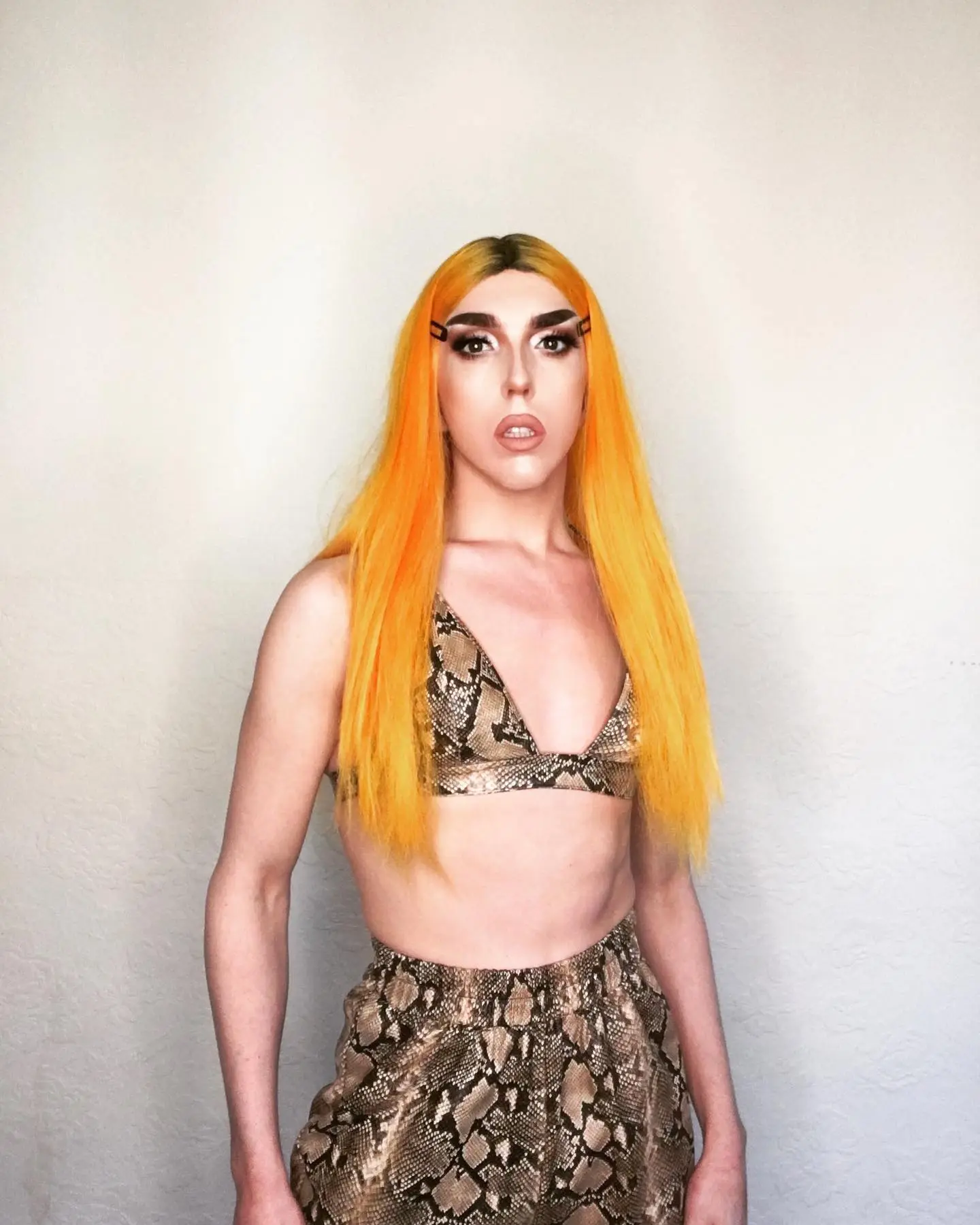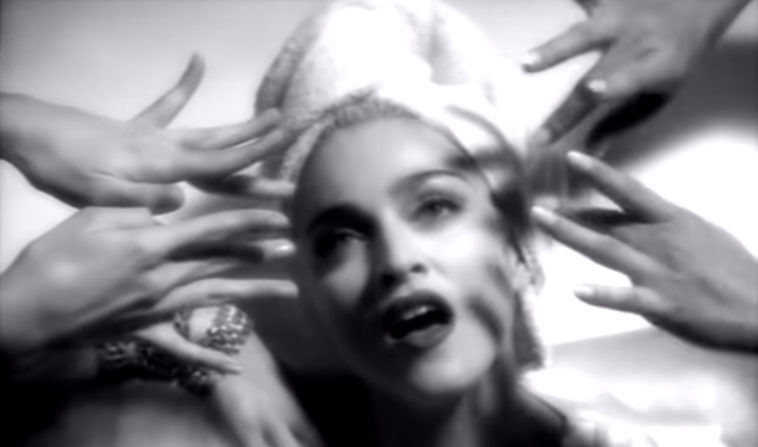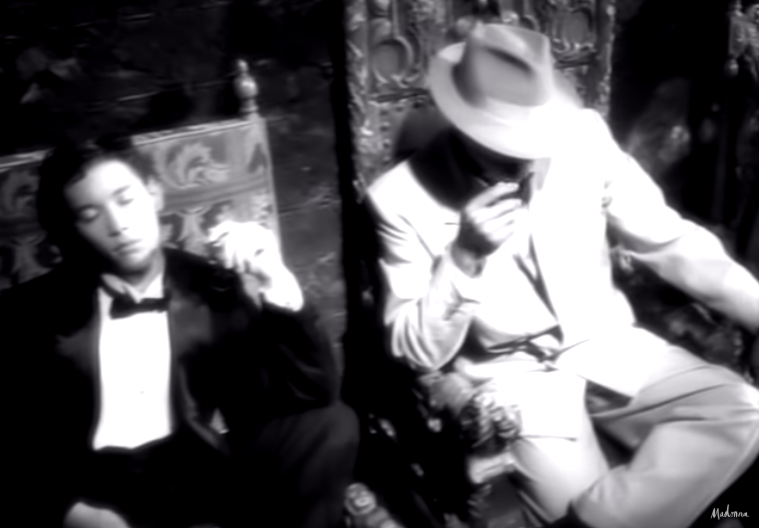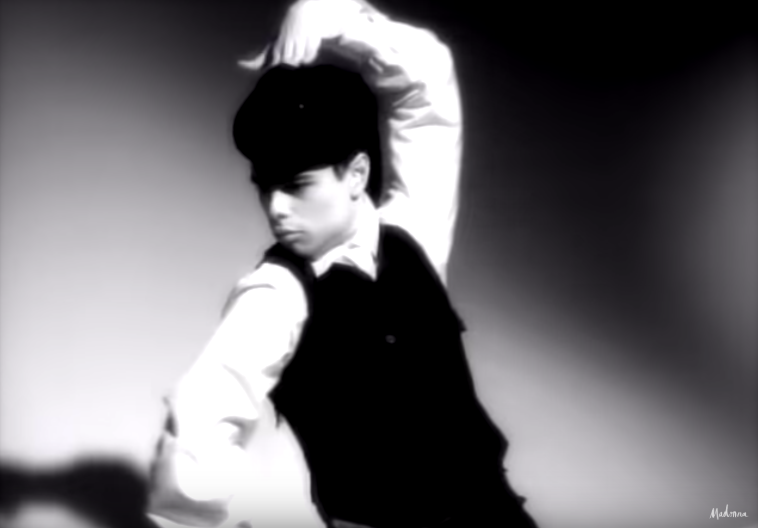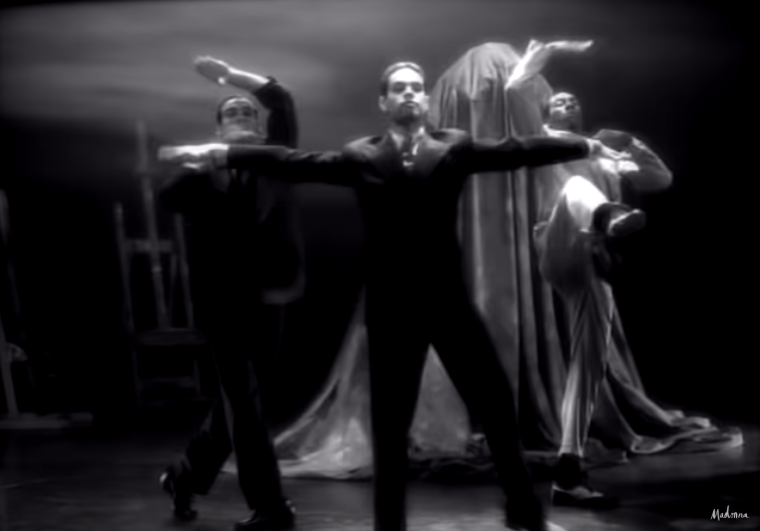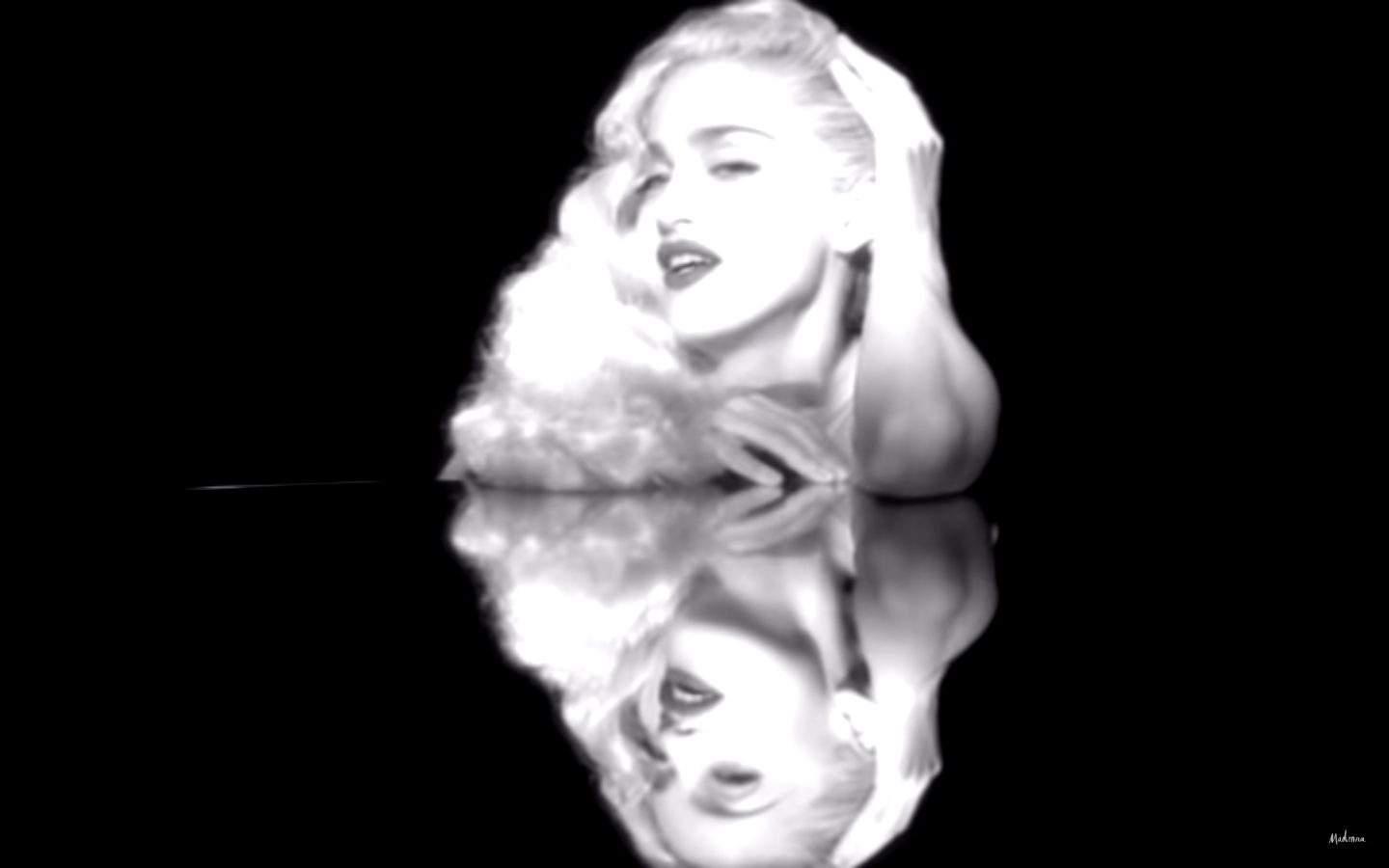Celebrating 30 years of Madonna’s Vogue, the song that thrust queer culture into the mainstream
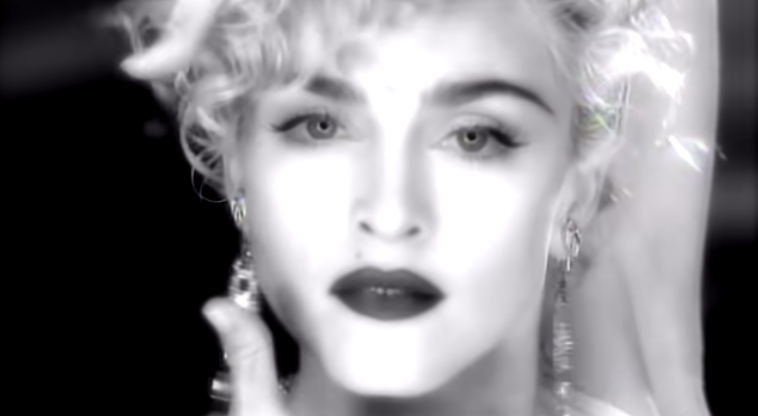
Vogue by Madonna was most sold song of 1990, with over 600 million sales worldwide (YouTube)
Margo Marshall is a trained classical dancer known for her explosive moves, seductive lip-syncs and glamorous androgynous looks.
She has performed on the BAFTAs, MTV Music Video Awards, The Graham Norton Show, Mighty Hoopla, Brooklyn’s BUSHWIG Festival, Robyn’s “Honey” Music Video and headlined The Unroyal Variety at Hackney Empire.
Writing for PinkNews on the anniversary of the 1990 song “Vogue” by Madonna, she pays tribute to the star’s phenomenal influence on queer culture, from one entertainer to another.
Vogue is of course an iconic song, one of the few Madonna tracks that transcends even Madge’s own infamy.
The anthem has everything, camp references, stylish visuals and a fun rap to scream in your friends face to PROVE YOU KNOW THE LYRICS (…why do we do this?). But once you scratch the frivolous surface, there is far more reason for the songs longevity and cultural importance.
The first time I became aware of a ‘Madonna’ I was watching a teachers talent show for Children in Need at school and my music teacher Miss Bailey ‘performed’ Frozen. Despite questionable vocals, I was entranced and had to hear more of this angelic mystical sound. I came home and was yapping about this thing I had discovered called ‘Madonna’ (surprise, I was a loud, obnoxious child).
My dad disappeared to his car and returned with my first M album Ray of Light. I listened to the poor thing til Madonna was as blue in the face as the album cover. And so began an obsession. I raced through album after album, Music, Like A Virgin, True Blue desperate for more. Then I listened to “Vogue”… and the world stopped.
The opening note hit in the air and buzzed through the room, my heart beat copied the build of the tracks soft thuds and then the bass kicked in. I squealed with relief, it had FINALLY started! Suddenly I had a new dream about “Vogue”, gone was the desire to be an emaciated model in the pages of a boring magazine, I wanted to be a powerful, sexual, beautiful, aggressive QUEEN!
Unlike my gay childhood cliche, the origins of the notorious track are however somewhat more surprising. After a brilliant run of singles, “Like A Prayer”, “Express Yourself” and “Cherish”, her next song “Oh Father” from the 1989 album began to show a decline in sales. So Warner Bros approached Madonna’s previous collaborator, Shep Pettibone, to create a B-Side with her for the next planned single “Keep It Together”.
However just three weeks later, from a small 24-track recording studio in a basement closet of 56th street in Manhattan, “Vogue” dropped on their desk and the plan changed. This song was considered too good to waste. The track became the lead single on her album I’m Breathless accompanying her role in the film Dick Tracey, and went on to be the most sold song of 1990, with more than 600 million sales worldwide (wish I could do that with my B-side).
But why was it such a runaway success? Some have cited Pettibone’s production style as a major reason for the track’s popularity. Pettibone was an innovator in is his own right, known best for making remixes because of his revolutionary techniques. He elevated tracks, being one of the first to restructure songs and record new musical tracks, a staple of remixing today.
He was such a talented producer that Madonna even changed the release of “Express Yourself” to his mix shortly after premiering the music video, thus explaining the millions of different versions of “Express Yourself” (the bane of your life when you’re a professional drag witch who does this as a number and DJs just play any old version instead of downloading your track).
This incredible talent for reimagining singles transferred to producing a highly distinctive yet timeless sound, in this case marrying classic golden era with house music. However I think there are a few other key things that have given “Vogue” its iconic status.
As a young queer in a rather less exciting part of the world, the song was my first taste of queer culture, not that I knew it.
I was focused on the glamours Hollywood stars, which in fairness has its own queer history to it as well. My family were pretty camp and so I knew the hit list names of Monroe, Dean and Kelly after spending endless Sundays watching old movies and jazzy musicals. But I had now discovered Marlene Dietrich, Greta Garbo and Bette Davis and avidly stared at photos of their dramatically poised faces and listened in wonder to their bizarre clipped mid-Atlantic accents.
‘Vogue’ has stood the test of time… acting as a beautiful cyclical exchange of tastes across generations of the queer community.
The rap section was Pettibone’s idea in the studio, and although it moved away from original influence of the ballroom scene it rather beautifully added another layer to the songs queer-ism. The Golden Era references highlighted the importance of older queer icons and continues to educate younger generations like myself about people the older members of the scene used to look up to before Cher (yes twinks, it’s hard to imagine gayness before Cher, I know).
As a dance track, “Vogue” has stood the test of time, continuing to still be played and acts a beautiful cyclical exchange of tastes across generations of the queer community.
On the subject of our queer community. THE BALLROOM.
Immediately I get flashes in my mind from Paris is Burning which of course recently came to Netflix, and with the song’s heavy feature in season two of Pose, it’s no wonder “Vogue” has had a bit of a rebirth. However it is shameful to think that this part of queer culture in recent years has been seen as ‘on trend’ in recent years.
Thankfully, the song was genuinely inspired by Madonna’s partying with her queer friends, and she brought these discoveries along for the ride. She booked two of the most accomplished dancers from the scene to be in and choreograph the songs video and accompanying tour. This was a real milestone in queer exposure, casting effeminate, openly queer male-bodied dancers on such a huge platform.
Coupled with the documentary Truth or Dare/In Bed With Madonna the level of transparency about the scene and its gender ambiguity was not watered down for the mainstream audience, even including a gay kiss which lead to huge controversy. This does, however, force a question: was Madonna being an ultimate ally or appropriating queer culture?
Was Madonna being an ultimate ally or appropriating queer culture?
Some of her dancers from the Blonde Ambition tour sadly think she used the kiss to create controversy and therefore free advertising (to get it straight from the horse’s arse, watch Strike a Pose on Netflix, though beware major fans. They aren’t that nice about our queen).
On the other hand, she did also party for years on the scene, did backing vocals for the two Voguer’s (Luis & Jose Xtravaganza) when they released a track shortly after the tour called “Queen’s English” and included information pamphlets on HIV and safe sex in the album sleeve of Like A Prayer.
What is of such striking importance about this last one for me is that the Reagan-led government at the time was actively supporting the theory of HIV being ‘the gay plague’ and refusing to aid in any way, therefore the cost of the pamphlet and distribution came from Madonna herself.
Now that’s an ally. Although quickly checking my privilege, as I am not a part of the ballroom scene I don’t think this is actually my question to answer, but I do think its important to ask it.
But now onto my favourite reason. Two words. Blonde Ambition.
The concert that changed the game. Bowie upped the anti with live musical sets on tour, having flying moons, costume changes and even hovering over audience in a cherry picker. However never to be out done Madonna took this inspiration and scaled UP. The Blonde Ambition tour can be cited as the format that informs the female pop music tour to today. Madonna added to the gig experience by not just having a few dancers but having a whole troupe, sections that moved the show narratively, set changes, proper hydraulics to make a serious entrance and exit.
Plus the next big controversy of her career, pretending to masturbate to “Like A Virgin” (ICONIC). But would this have happened without the queer influence of Vogue. Who can say for sure except her? She was living in the world of such varied sexual and gender expression, having these pioneers and activists surround her, embracing and celebrating their femininity. It’s not too big a jump to suggest that the next level of her sexual expression quickly followed from this time.
Just look at the work… Justify My Love, Erotica, The SEX Book and Bedtime Stories. One I know for sure is that without “Vogue” bringing such incredible femme male dancers to the forefront I never would have seen anything in the dance industry that proved my worth as a young camp dancer constantly being told to dance more like a man. For that I’ll be forever grateful.
“Vogue” turning 30 is more than just an anniversary in one pop star’s glittering career. It is a prominent and beautiful marker for how far we have come as a community from when the ballroom scene started, to where we are now with our stories actually being represented in the media. But also the importance of one of the As in LGBTQIAA+ and the contribution one ally can make to the rights, representation and even health of our community.
With this in mind, I implore us stop banding about the words ‘gay icon’ for ever slightly camp meme star or dumb reality TV girl and leave it to the people that do this for us. Remember there’s nothing to it…
